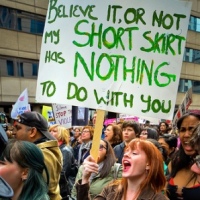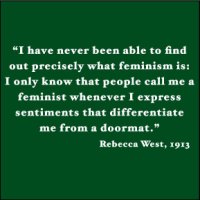I’m putting this upfront again because a new discussion has opened up as a result of my piece in the Drum yesterday on Robert Crumb and Hetty Johnson.

Bill Henson by publik 16 via flickr
Bill Henson has a new photographic exhibition at the Tolarno Galleries in Melbourne.
The usual suspects, who art critic John McDonald calls the “despisers of the body” (Spectrum, April 9-10, 2011) have taken up cudgels against Henson’s images.
Interestingly, two prominent objectors, journalist and media researcher Nina Funnell, and Christian conservative Melinda Tankard Reist, both admit they haven’t seen the exhibition, however Reist says she has seen previous works and she knows what Henson is up to.
I haven’t seen this exhibition either, so am in no position to comment. What I do object to, however, is the conservative attitude that any depiction of adolescent nudity is pornographic, and the implication that everyone who views the images of adolescents is doing so from the perspective of a paedophile. That is, the danger they perceive is that all viewers will be sexually aroused in an inappropriate manner, and will want to sexually engage with the young people depicted in the photographs.
Therefore, the photographs are “a catalyst for forbidden desires” to quote McDonald again, and as such, should be censored.
Objectors such as Funnell and Reist have as their basic assumption that the young person’s body can only ever be viewed as a sexual object when portrayed in Henson’s photographs, even when they haven’t actually seen them. They do not allow for any other understanding or interpretation, such as those Henson himself has advanced that are to do with his interest in capturing the liminality of adolescence, and revealing the young person on the threshold of immense change, in the throes of all the uncertainties and ambiguities that accompany this state.
In the world view of the protestors, there is no room for any interpretation other than the sexual, and they urge all of us to view the images through the eyes and with the imagined desires of the paedophile.
There is something very alarming about their perspective, and something even more alarming about their urgent need to thrust that perspective on everyone else. Funnell tells us breathlessly that Henson’s images are known to be collected by paedophiles. Well, so are Target catalogues picturing little kids in their undies. Does this mean we must order and censor the world around us according to the base desires of the perverted? Does this mean that anything likely to appeal to the paedophile’s gaze must be obliterated from our cultural landscape?
Or are they arguing that any gaze directed towards photographs such as Henson’s is inherently paedophiliac, simply because the owner of the gaze directed it there in the first place?
This attitude turns everyone who visits the exhibition into a vicarious paedophile. It defines all visitors as abusers. It suggests that all those who view the images are compelled to adopt the perverted gaze to the exclusion of any possible other.
And this is what makes people like Funnell and Reist dangerous. They see a world comprised of sexual predation and abuse, and are unable to allow the legitimacy of any other vision. For this reason alone, they should not be trusted in the matter of Henson’s work, anymore than one would trust a paedophile’s limited and distorted perspective.
Related Articles
- School kids at Henson’s new show (heraldsun.com.au)
- No lynch party for new Henson show: critic (news.theage.com.au)
- Nakedly unrepentant (theage.com.au)






































Recent Comments